A Visit to Carymoor Environment Centre
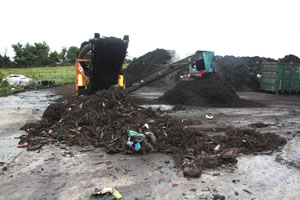 'Pooh! What's that?' My niece, Giulia, wrinkled her small and perfectly formed eight-year-old nose.
'Pooh! What's that?' My niece, Giulia, wrinkled her small and perfectly formed eight-year-old nose.
'That,' I said, 'Is the smell of "away". You know, when you're finished with something and you throw it away. Well, this is away.' And, passing the machinery, skips and industrial buildings, it certainly felt like it.
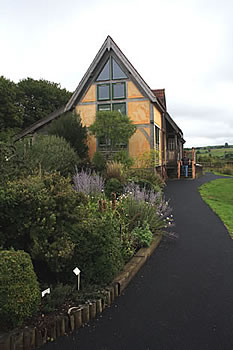 We were driving through Dimmer Landfill Site on our way to Carymoor Environmental Centre for a 'Wild Wednesday', part of the Centre's free educational programme for families.
We were driving through Dimmer Landfill Site on our way to Carymoor Environmental Centre for a 'Wild Wednesday', part of the Centre's free educational programme for families.
Carymoor Environmental Centre is sited on 135 acres of Dimmer Landfill Site on the edge of Castle Cary. It was set up in 1996 by a small group of enthusiasts after the founder, Hamish Craig, was involved in re-homing some Great Crested Newts at the landfill site. Until recently Hamish was chairman of the trustees.
Where most people would have seen only acres of grey clay capping a slice of rotting household rubbish 15 metres deep, Hamish and his wife Gill saw the potential to create a sustainable environment where they could teach about biodiversity and environmental awareness.
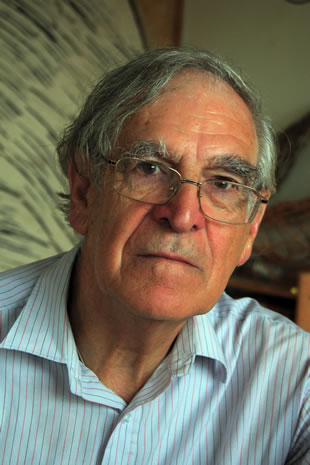 Hamish Craig, founder |
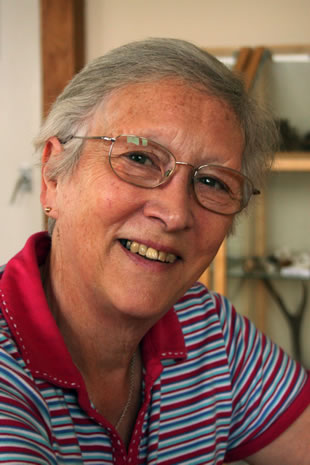 Gill Craig |
They gained the support of Wyvern Waste Services Ltd who used to run the site and, funded through the Landfill Credit Scheme, the Carymoor Environmental Centre started its existence in a portakabin.
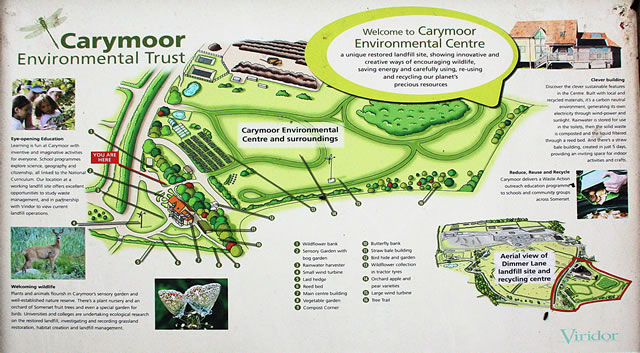
The centre continues to rely on Landfill Tax Credit Scheme funding for capital works and research and this is now made available to Carymoor through the support of the current site owners, Viridor Waste Management Ltd.
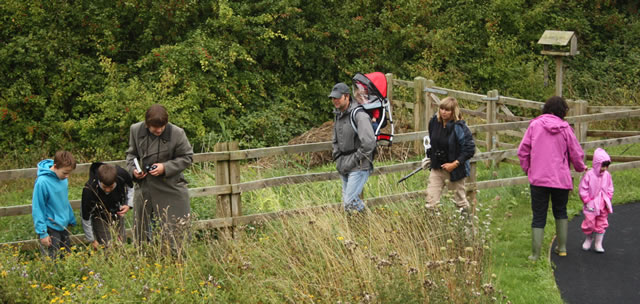
The trust aims 'to provide an education programme that encourages environmental responsibility and the desire to help create a sustainable future' and works with schools, volunteers, universities, wildlife groups and charities. 'Wild Wednesdays' as seen here, aim to introduce children to some of the insects, birds and mammals at Carymoor.
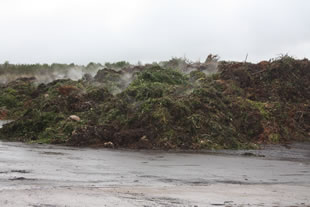 Green waste |
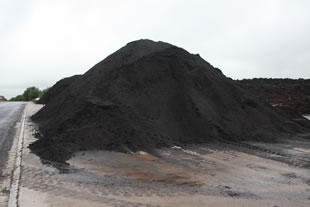 Compost |
On our way to the Centre, Giulia and I couldn't help slowing down to look at the vast heaps of green waste that steamed and the giant shredders that roared and clattered. This is where cuttings and weeds from your garden are transformed by Viridor into rich, black compost.
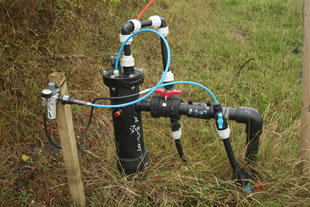 Methane valve |
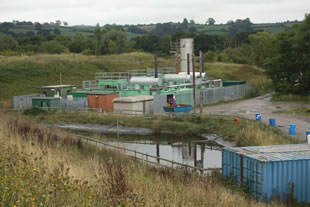 Methane driven power plant |
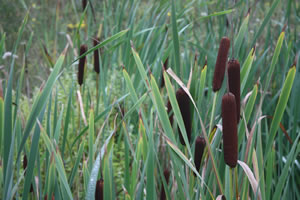 Methane is used to produce electricity and the liquids, called leachate, are purified through reed beds before being released into the local water courses.
Methane is used to produce electricity and the liquids, called leachate, are purified through reed beds before being released into the local water courses.
After the stink and the noise of the landfill site, the Centre, with its sustainable building set in wildflower meadows, was another world. Wind turbines silently produce electricity, waste from the composting loos is purified in a reed bed, rainwater is harvested from the reclaimed tile roof and solar and photovoltaic panels provide energy. The main building is timber framed, double-glazed and uses recycled and sustainable materials. Nearby, a strawbale building sitting on foundations made from old tyres, provides further teaching space.
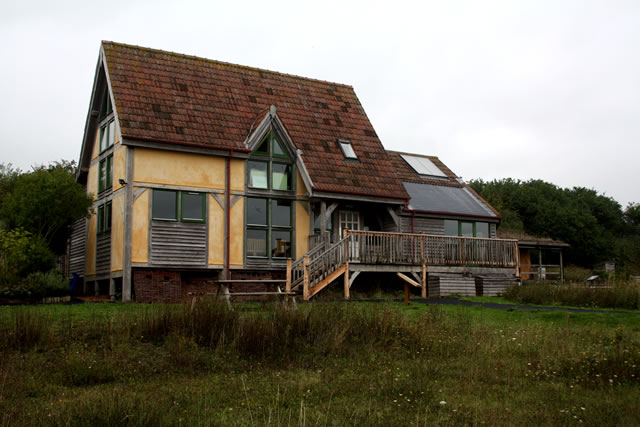
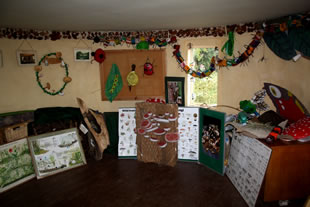
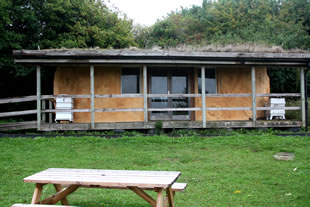
The straw bale building, interior and exterior
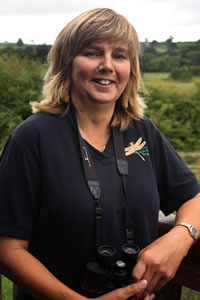 Julia Percy, the centre's Community Conservation Officer, welcomed the small and enthusiastic group of would-be wildlife experts into the octagonal classroom built of Douglas fir and oak and decorated with photographs and colourful children's artwork before taking us to examine the contents of some live mammal traps. She had baited these with fruit, seeds and, rather surprisingly, cat food, the night before. Shrews, it seems, are partial to a bit of Whiskas.
Julia Percy, the centre's Community Conservation Officer, welcomed the small and enthusiastic group of would-be wildlife experts into the octagonal classroom built of Douglas fir and oak and decorated with photographs and colourful children's artwork before taking us to examine the contents of some live mammal traps. She had baited these with fruit, seeds and, rather surprisingly, cat food, the night before. Shrews, it seems, are partial to a bit of Whiskas.
The first catch of the day was a vole which was carefully shaken into a plastic box to be admired with lots of 'oohs' and 'aahs' before being returned to the wild. The next trap was inhabited by a shrew. Looking as if it needed a dose of Ritalin, it whisked around the box at top speed, snacking on snatches of kit-e-kat.
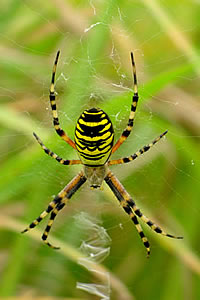 Not all the traps were inhabited and the children learned that wildlife is just that - animals with lives and minds of their own, not a resource permanently on tap. In one trap, the vole had died and Julia explained to the children that voles have very short lives. It was a good lesson.
Not all the traps were inhabited and the children learned that wildlife is just that - animals with lives and minds of their own, not a resource permanently on tap. In one trap, the vole had died and Julia explained to the children that voles have very short lives. It was a good lesson.
We were all impressed by a large wasp spider in the centre of its web. These spiders, which look as if they're wearing yellow and black striped rugby kit, are particularly fond of eating grasshoppers, and make special heavy-duty zig-zag webs to catch them.
Wasp spiders originally come from Europe and although there must be others about, Carymoor is the only place in Somerset where they are known to be breeding. Their presence, along the white egrets from the Mediterranean and the pink grasshoppers which feature elsewhere on Wincanton Window, is evidence of the changing climate.
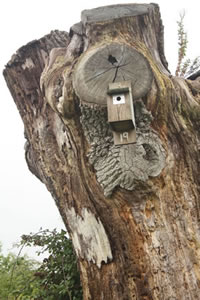 We found deer and badger tracks in the mud, fingered the damage done to the plantation of Somerset willows by roe deer scraping the off the bark with their antlers and turned over galvanised sheets of old tin in the hope of finding grass snakes warming themselves.
We found deer and badger tracks in the mud, fingered the damage done to the plantation of Somerset willows by roe deer scraping the off the bark with their antlers and turned over galvanised sheets of old tin in the hope of finding grass snakes warming themselves.
We were shown the wooden barn owl boxes (similar to this blue tit box but larger) which have been inhabited by male owls during the nesting period and last year, by a nest of hornets. Paths through the uncut meadows of thistles, grasses and fleabane provide an ideal hunting ground for the owls' favourite supper: voles just like the cute little chap we caught earlier.
The realisation that wild animals aren't cuddly pets living in a vacuum but part of a complex interdependent web of life is one of the centre's key messages.
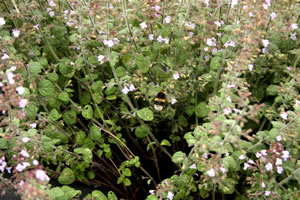 Co-founders, Hamish Craig and his wife Gill, are passionate promoters of biodiversity. Hamish defines biodiversity as providing the widest possible spread of indigenous life as possible to create interdependent food webs. The wider the variety of plants, the more insects, reptiles, birds and mammals there will be - each species depending on others to thrive.
Co-founders, Hamish Craig and his wife Gill, are passionate promoters of biodiversity. Hamish defines biodiversity as providing the widest possible spread of indigenous life as possible to create interdependent food webs. The wider the variety of plants, the more insects, reptiles, birds and mammals there will be - each species depending on others to thrive.
Hamish cites the decline of the bee as an example of the importance of biodiversity and he is in agreement with Albert Einstein who observed, "If the bee disappeared off the surface of the globe, then man would only have four years of life left. No more bees, no more pollination, no more plants, no more animals, no more man."
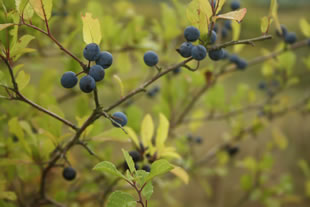
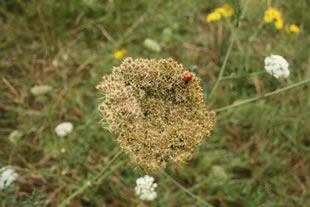
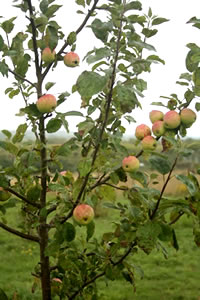 The site has been divided into a wide range of habitats to provide different sorts of cover and food plants for birds and mammals as well as insects.
The site has been divided into a wide range of habitats to provide different sorts of cover and food plants for birds and mammals as well as insects.
There are green lanes with banks and hedges, an orchard of traditional Somerset apples, a collection of willows - another traditional Somerset crop, a sensory garden, a vegetable garden and a demonstration compost area.
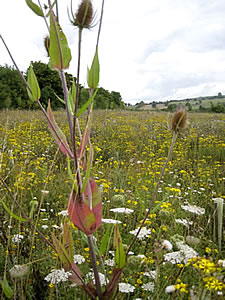 There are a hundred acres of meadows around the site, each with different mixtures of flowers and grasses, each cut and managed differently to create as much biodiversity as possible. Thirteen universities have worked with Carymoor during the fourteen years since its inception and the meadows have been open-air classrooms for undergraduate projects.
There are a hundred acres of meadows around the site, each with different mixtures of flowers and grasses, each cut and managed differently to create as much biodiversity as possible. Thirteen universities have worked with Carymoor during the fourteen years since its inception and the meadows have been open-air classrooms for undergraduate projects.
The Butterfly Bank was created with the expertise of the West Country Branch of Butterfly Conservation in the shape of a giant serpent. The serpent's coils provide the sunny banks and sheltered spots the butterflies need. Areas of chalk create a habitat for downland plants which feed the rare Small Blue butterfly which is one of Carymoor's rarities.
Carymoor is home to over thirty different sorts of butterfly. Silver-washed fritillaries were recorded for the first time this summer and Hairstreaks and the charmingly named Grizzly and Dingy Skippers are common.
The water on the site attracts the usual ducks, swans and moorhens as well as the secretive Water Rail, which is breeding at Carymoor. As well as quite deep ponds, there are 'scrapes' which are shallow ponds literally 'scraped' from the clay. They dry out in summer but provide a habitat for migrating birds like snipe in the winter.
Bats, moths and even glow worms appear at night with badgers and foxes. As we walked around the site, roe deer bounded off through the brambles and a green woodpecker's call warned of our progress.
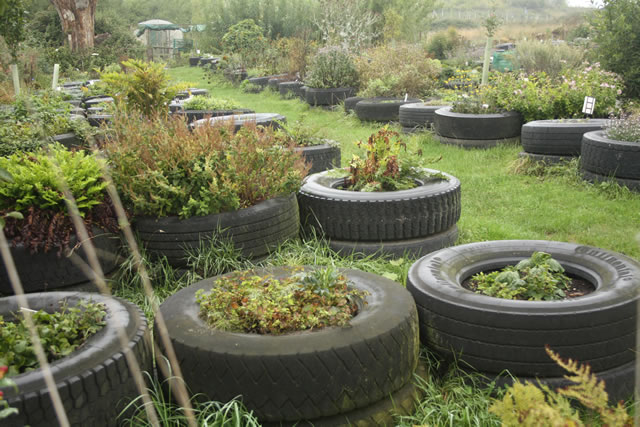
I really liked the tyre garden. A comprehensive collection of Somerset wildflowers is grown in raised beds made from old tyres. There are different areas for woodland, field, maritime and wayside plants and the garden is a living wildflower encyclopaedia, a testament to the extraordinary variety of flora which will grow in this area.
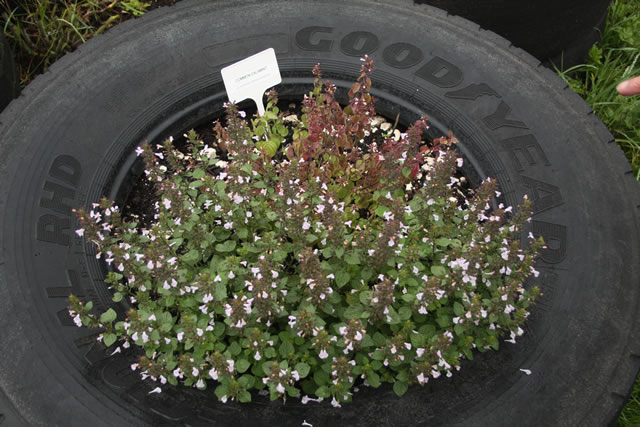
Hamish describes the site as a 'an oasis for wildlife in the middle of an agricultural desert' and he's absolutely right. The meadows at Carymoor are full of colour and movement. They contrast with the silage and wheat fields surrounding them almost as much as with the muck and mud of the refuse site.
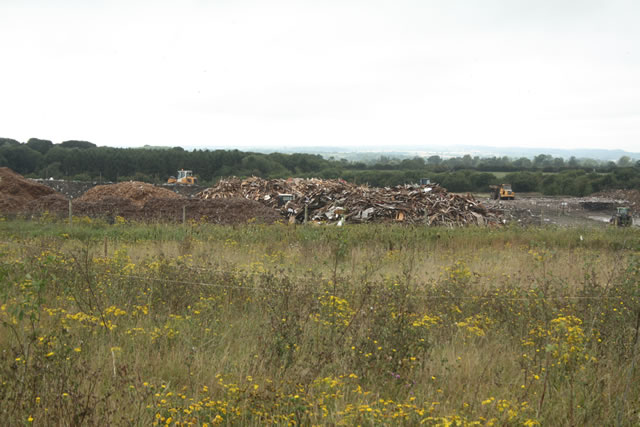
Like the compost heaps we passed on the way in, Carymoor is evidence of how, through imagination, vision and hard work, the waste we produce can be recycled into something rich and fertile. Carymoor is a sanctuary of beauty and tranquillity, providing a valuable and varied wildlife habitat and a place to learn first-hand about the environment.
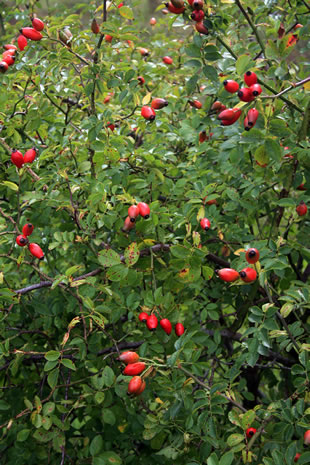
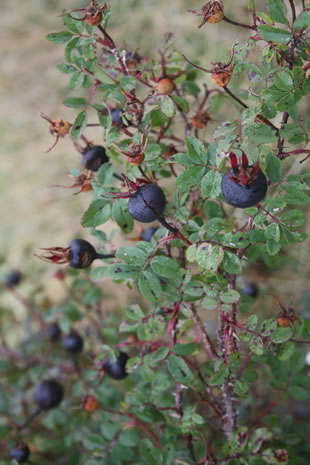
Back home, Giulia was bursting to tell her mum about how deer's footprints are called slots, how she'd sat under the willows in a circle with the other children, the Bronze Age roundhouse, the quiz she'd done and the wasp's nest.
'What was the best bit?' I asked.
She didn't have to think for long. 'The dead mouse.'
Sarah Darlington
(Photos by John Baxter. Butterflies, Jules Cross. Children, Sarah Darlington)
To find out more about Carymoor, the activities and events they run, the people who work there and the detailed aims of the centre, visit www.carymoor.org.uk
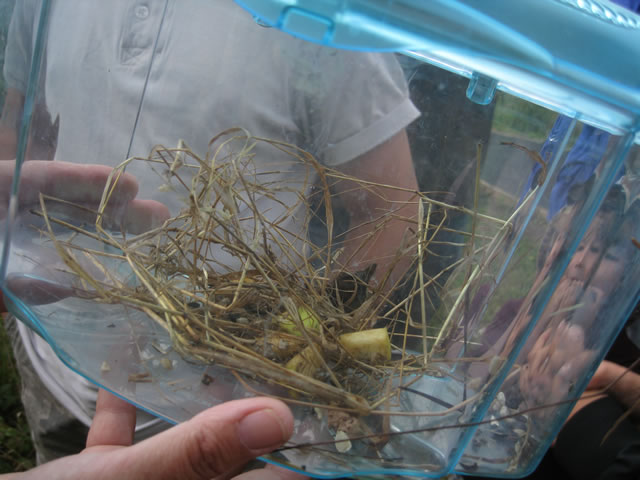
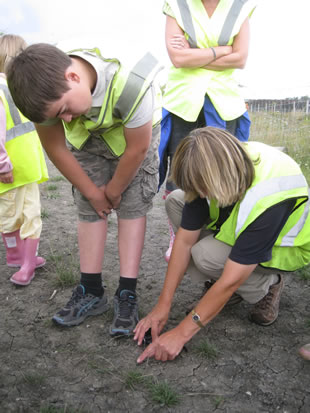

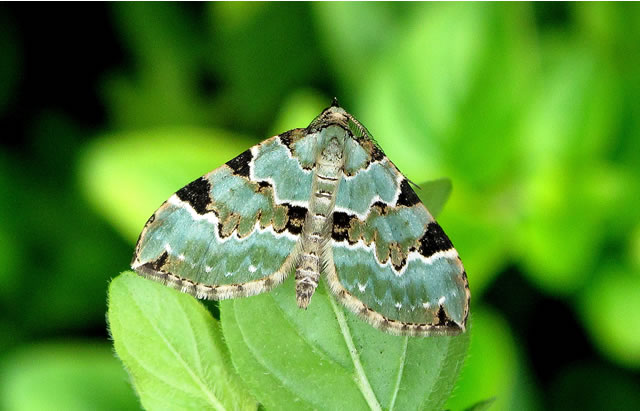

Comments
Login to comment!